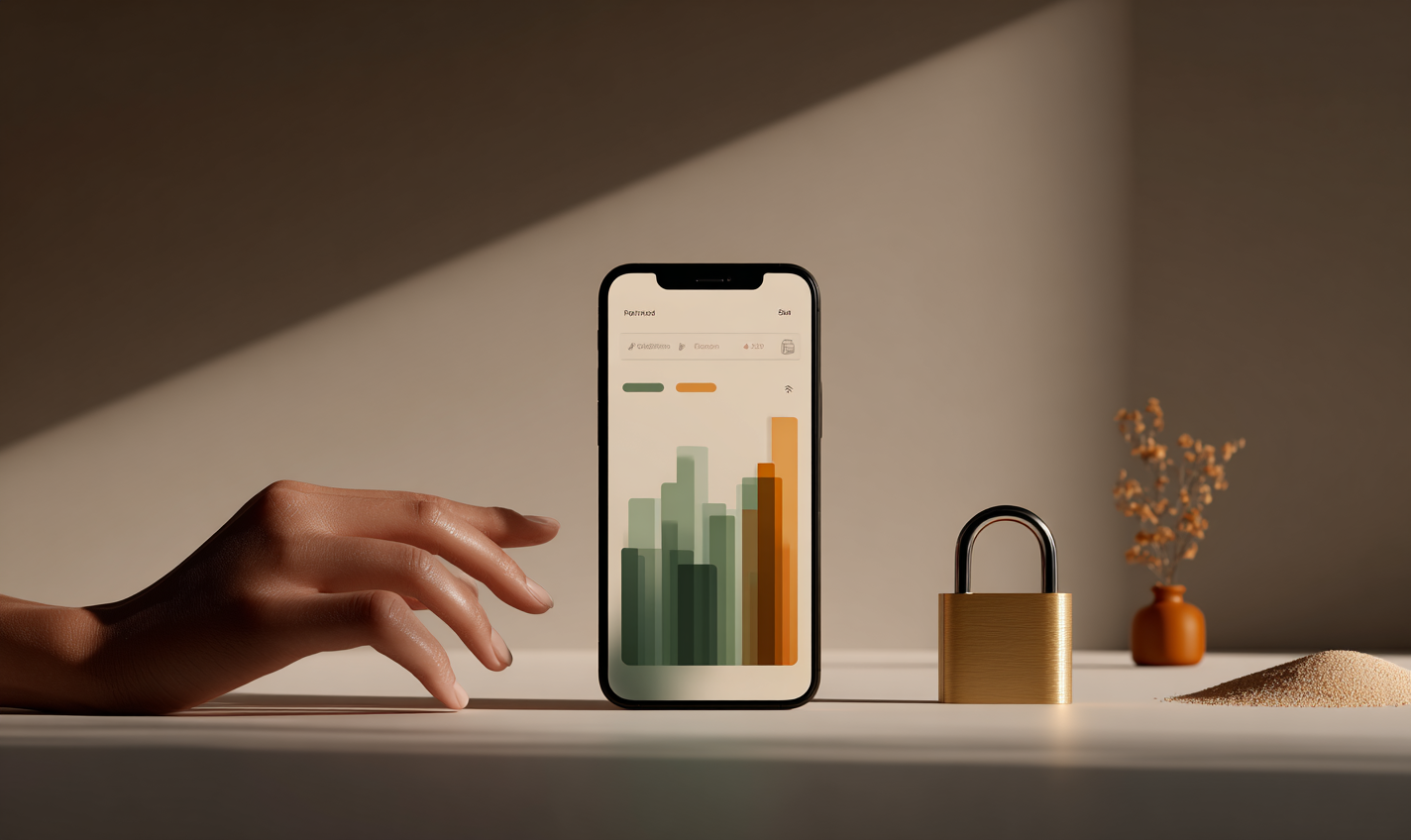
Emergency Fund vs Investing: Should You Save Before You Start Investing?
Before you grow your money, you need to protect it. Your first investment is a safety net—then you climb.

Key Steps
« Pay yourself a safety net before you pay the market. » If you’re weighing emergency fund vs investing, start by protecting your cash flow so you’re never forced to sell investments at the worst moment.
The smartest order for beginners—emergency fund before investing—helps answer the common dilemma “save or invest first?” and reduces stress when comparing emergency savings vs investments (SEC, Save for a Rainy Day 2025).
1.
What is an emergency fund and why does it matter?
An emergency fund is a cash buffer for unexpected costs—job loss, medical bills, urgent repairs—kept safe and easy to access.
Liquidity beats potential return here: having cash-on-hand avoids forced selling and panic decisions if markets drop (CFPB, Emergency Fund Guide 2024).
Psychologically, a buffer reduces the urge to chase risky bets or sell at a loss during volatility (CFPB, Emergency Savings & Financial Security Report 2022).
2.
How much emergency fund do you need before investing?
Use personal context to set a target; the goal is covering essentials if income stops—how much to save before investing depends on your stability and obligations (MoneyHelper, Emergency savings – how much is enough? 2025; SEC, Save for a Rainy Day 2025).
Should singles, families, and freelancers save different amounts?
- Single, stable job: 2–3 months of essential expenses.
- Dual-income households: 3–6 months, adjusted for dependents and job security.
- Freelancers/variable income: 6–12 months to cover slow periods and billing gaps (FCA, Should you invest? 2021).

What personal factors change the target size?
Job stability, number of dependents, health coverage, ability to get family support, debt load, and housing security all shift the buffer you need (CFPB, Emergency Fund Guide 2024).
How do you calculate your monthly essentials correctly?
Add rent/mortgage, utilities, groceries, transport, basic insurance, and minimum debt payments; exclude discretionary spending. This “bare-bones” baseline sets a realistic emergency goal (MoneyHelper).
What accounts make your fund accessible without risking principal?
Use instant-access savings or other regulated, low-risk accounts; keep the fund separate from everyday spending to avoid dipping in by accident (SEC, Save for a Rainy Day 2025).
Why not keep the fund in stocks, crypto, or long-lock products?
Market volatility and withdrawal penalties conflict with the fund’s goal: certainty and quick access. Investments can fall precisely when you need cash.
The emergency fund vs investing debate isn’t “either/or”
—it’s sequence.
3.
When can you safely start investing after building your fund?
What is the step-by-step path from saving to investing?
- Map monthly essentials and pick a target in months
- automate transfers until you hit the minimum viable buffer
- start small recurring investments while maintaining contributions
- rebalance as income grows or risk profile changes (FINRA, Financial Foundations 2024; SEC, Lump Sum Info Sheet 2023).
How do partial thresholds work (2 months now, 3–6 months later)?
Use a phased approach: once you reach 2 months, begin investing a small percentage while you continue topping the fund to 3–6+ months (FCA; MoneyHelper).
What triggers should adjust your decision?
A new child, job change, relocation, loss of insurance, or large planned expenses—any of these justify increasing the cash buffer before raising investment risk (CFPB, Emergency Fund Guide 2024).
4.
How does investing vs saving fit into a beginner’s plan?
What are the pros and cons of saving first?
Pros: safety, flexibility, lower stress.
Cons: opportunity cost if markets rise. A solid buffer prevents costly, panic-driven exits from investments (SEC, Save for a Rainy Day 2025).
What are the pros and cons of investing early?
Pros: more compounding time and an earlier learning curve.
Cons: without a buffer you risk forced selling into downturns, turning temporary losses into permanent ones (FINRA, Financial Foundations 2024).
What is a balanced approach for beginners?
Split contributions—for example, 80% to the emergency fund and 20% to a simple starter portfolio; after hitting a base (e.g., 3 months), flip to 20% fund maintenance and 80% investing (FINRA, Financial Foundations 2024).
What is a simple starter allocation once your base fund exists?
Use broad, low-cost, diversified building blocks with small recurring contributions, then scale risk gradually as your cushion and experience grow (FINRA, Financial Foundations 2024).
How do you keep the fund topped up while investing?
Maintain micro-contributions (for inflation) and replenish immediately after any emergency withdrawal so the buffer is ready for the next shock (SEC, Save for a Rainy Day 2025).

5.
How much to save before investing in common real-life scenarios?
What does a starter plan look like for a stable salaried worker?
If essentials are €1,500/month, target €4,500 (3 months).
Automate €300/month: reach the base in 15 months. At month 10 (≈2 months saved), begin €50–€100/month into a diversified starter portfolio while continuing to build the fund (FINRA, Financial Foundations 2024).
What about a freelancer with variable income?
Aim for 6–12 months. Add a “slow-months” sub-fund and set aside taxes quarterly. Use irregular windfalls (invoices paid, refunds) to accelerate the buffer before scaling investments (CFPB, Emergency Savings & Financial Security Report 2022).
What changes if you have high-interest debt?
Hold a minimum viable fund (1–2 months), then prioritize accelerated payoff of high-interest debt before increasing investments; expensive interest can swamp expected returns (SEC, Save for a Rainy Day 2025; CFPB, Emergency Fund Guide 2024).
What practical steps help you build an emergency fund quickly?
- Automate transfers on payday, keep the fund at a separate bank, use round-ups, and channel windfalls (bonuses, refunds) into the fund (FINRA, Financial Foundations 2024).
- Name the account “Emergency Only,” remove it from app favorites, and set rules for replenishment after any withdrawal (CFPB, Emergency Fund Guide 2024).
- Review essentials annually, adjust the target months, and update automation amounts when bills or income shift.
6.
What common mistakes do beginners make in emergency fund vs investing?
Why is mixing goals in one account a problem?
When the fund shares an account with spending or investing, boundaries blur—leading to overspending or panic selling (CFPB, Emergency Fund Guide 2024).
Why is setting the wrong target dangerous?
Too small a fund can force asset liquidation; too large keeps excess cash idle and drags on long-term returns—match the amount to your risks (FCA, Should you invest? 2021).
Why is ignoring insurance gaps costly?
Under-insured risks (health, disability, home, auto) can overwhelm even a well-sized fund; review coverage as part of your plan (CFPB, Emergency Savings & Financial Security Report 2022).
Should I build an emergency fund before investing?
Ask yourself:
- Could I cover three months of essentials tomorrow?
- Do I have high-interest debt to tackle?
- Is my income reasonably stable for the next six months?
Your answers guide whether to prioritize cash or begin investing gradually (SEC, Save for a Rainy Day 2025; FINRA, Financial Foundations 2024).
What is the one-page action plan to follow this week?
Define your essential monthly number, set a month goal (e.g., 3 months), open a separate account, automate the transfer, and pick a simple starter investment once you reach the base threshold (FINRA, Financial Foundations 2024).
7.
Conclusion
The emergency fund vs investing debate isn’t “either/or”—it’s sequence. Build a resilient cash buffer first so market dips don’t become personal crises, then let investments compound calmly.
Calculate your essentials, set a month target, automate contributions, and scale investing once the base is secured.
8.
Frequently Asked Questions
How big should my emergency fund be?
Most beginners target 3–6 months of essentials; freelancers or volatile income may need 6–12 months (MoneyHelper; FCA, Should you invest? 2021).
Where should I keep emergency cash?
Use instant-access, low-risk accounts separate from your day-to-day spending (SEC, Save for a Rainy Day 2025; MoneyHelper).
Can I invest before I hit the full target?
Yes—some start investing at 2 months saved and keep topping the fund to 3–6+ months (FCA, Should you invest? 2021; FINRA, Financial Foundations 2024).
What if I have high-interest debt?
Keep a small buffer (1–2 months), then prioritize paying down expensive debt before increasing investments (SEC, Save for a Rainy Day 2025; CFPB, Emergency Fund Guide 2024).
How often should I review my fund size?
Review annually and after big life changes (new job, baby, move). Adjust contributions to keep pace with costs (MoneyHelper; CFPB, Emergency Fund Guide 2024).









